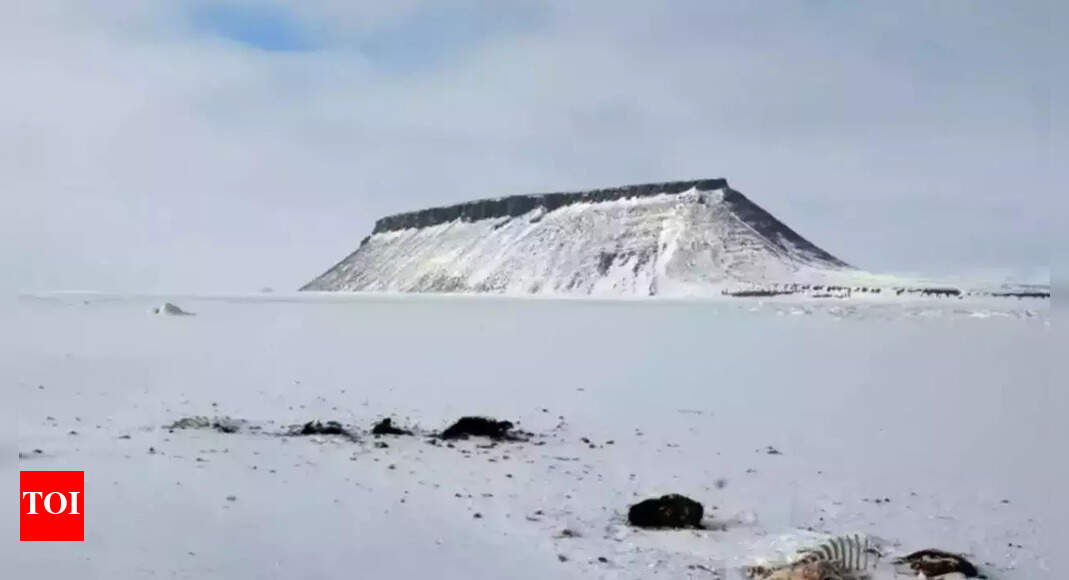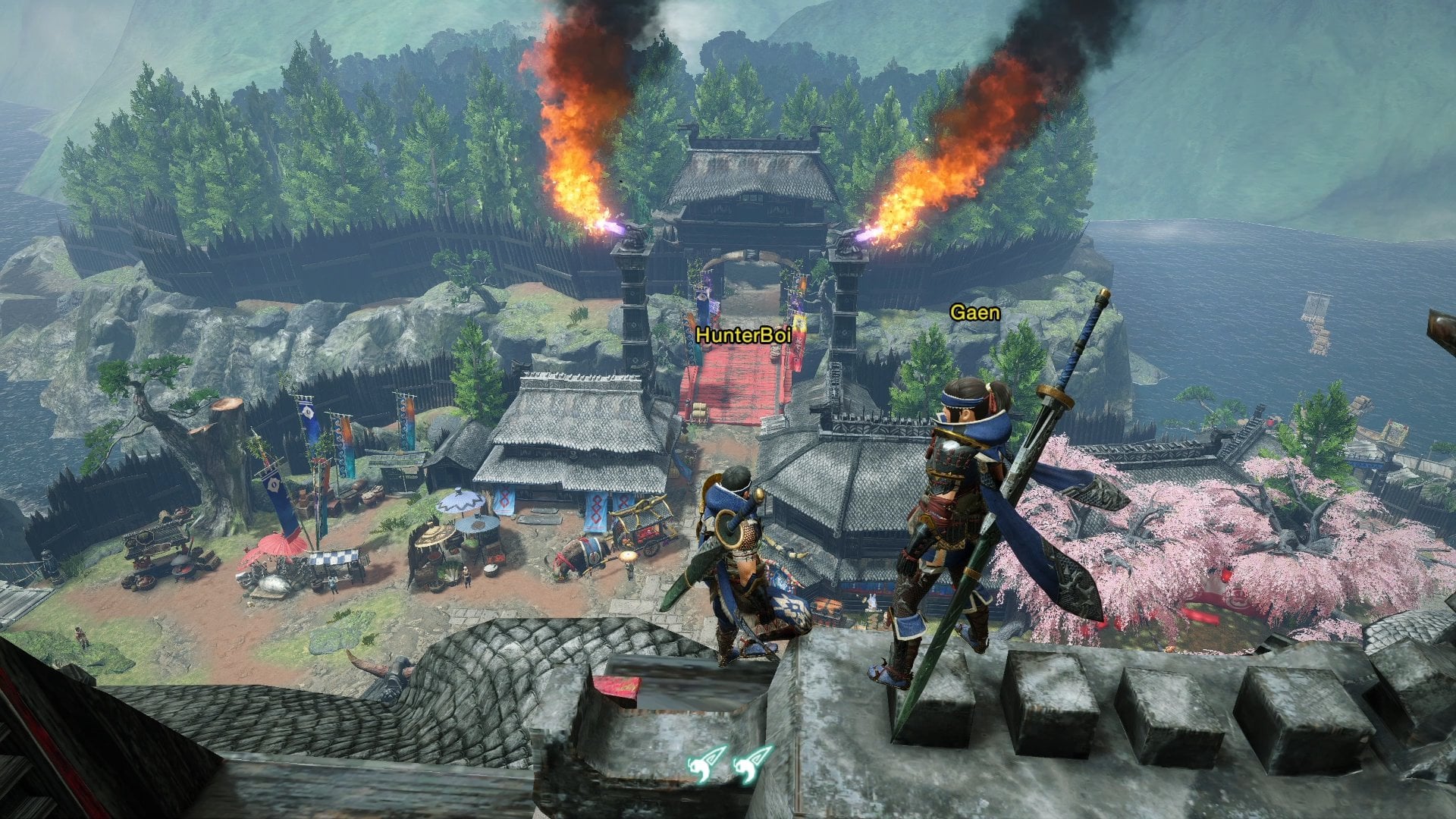The U.S. Nuclear Base Hidden Under Greenland's Ice: Decades Of Secrecy

Table of Contents
The Genesis of Camp Century: A Cold War Secret
Project Iceworm: The True Mission?
The official story presented Camp Century as a research station studying Arctic conditions. However, declassified documents and historical analysis suggest a far more ambitious, and clandestine, purpose: Project Iceworm. This top-secret initiative aimed to establish a network of underground missile silos capable of launching nuclear weapons across the Arctic.
- Strategic Arctic Location: Camp Century's location in the far north provided a significant strategic advantage during the Cold War. Its proximity to the Soviet Union offered a potential launch point for a first-strike capability.
- Overcoming Extreme Challenges: Constructing a base beneath the Greenland ice sheet presented unparalleled engineering challenges. The extreme cold, the immense pressure of the ice, and the remoteness of the location required innovative solutions and immense resources.
- The Cold War Context: The U.S.-Soviet arms race fueled the need for advanced military installations. The threat of nuclear war spurred the creation of secretive projects like Camp Century, designed to enhance strategic positioning and deterrence.
Construction and Logistics: A Monumental Undertaking
Building Camp Century was a feat of Cold War engineering. The sheer scale of the project, coupled with the extreme environmental conditions, required innovative techniques and immense logistical support.
- Nuclear Power Source: The remote location necessitated a reliable power source, and the base utilized a portable nuclear power plant, adding another layer of complexity and environmental concern.
- Transporting Materials: Moving equipment, supplies, and personnel to this isolated Arctic location was a logistical nightmare, requiring specialized transportation methods and significant resources.
- Innovative Construction Techniques: Engineers devised innovative methods for excavating and constructing tunnels and buildings within the ice sheet, adapting to the unique challenges of the Arctic environment.
Uncovering the Truth: Declassified Documents and Scientific Findings
The Environmental Impact: A Lasting Legacy of Contamination
The legacy of Camp Century extends beyond its geopolitical implications. The base's operation resulted in the release of radioactive waste, posing a significant long-term threat to the Greenland ice sheet and its surrounding ecosystem.
- Radioactive Waste Disposal: The methods used for disposing of radioactive waste were inadequate by modern standards, leading to significant contamination. This includes not only the nuclear power plant's waste but also other radioactive materials used in the base's operations.
- Potential for Ice Sheet Melting: Recent scientific studies have raised concerns about the potential for accelerated ice sheet melting due to the waste's presence and the effects of climate change. This could have significant global consequences.
- Ongoing Assessment and Remediation: Scientists are currently assessing the extent of contamination and exploring potential remediation strategies. The challenges of cleaning up the site in such a harsh environment are immense.
Modern Revelations and Ongoing Debate: A Renewed Focus
Recent declassification of documents and renewed scientific interest have brought Camp Century back into the spotlight. This has spurred renewed debate about the ethical and geopolitical implications of the project.
- Transparency Concerns: The secrecy surrounding Camp Century for decades raises serious concerns about transparency in international collaborations and the potential for environmental damage.
- Ethical Considerations: Questions about informed consent and the potential impact on Greenland's sovereignty continue to fuel discussion.
- Geopolitical Implications: The renewed focus on Camp Century highlights the sensitivity of Arctic territories and the need for careful consideration of future activities in this region.
The Legacy of Camp Century: Past, Present and Future
A Cold War Relic: Strained Relationships and Ethical Concerns
Camp Century remains a powerful symbol of the Cold War's lasting impact, influencing relationships between the U.S. and Greenland and raising important ethical questions about international collaborations.
- Strained US-Greenland Relationship: The secrecy surrounding the project damaged trust between the two nations. The lack of transparency and the potential environmental harm caused significant friction.
- Ethical Responsibility: The project underscores the crucial need for responsible behavior and transparency in international relations. Ignoring the potential environmental and ethical implications had long-lasting repercussions.
Lessons Learned and Future Considerations: Charting a Responsible Path Forward
The story of Camp Century offers valuable lessons for future activities in the Arctic, emphasizing the importance of environmental responsibility and international cooperation.
- Sustainable Arctic Development: The experience highlights the vital need for sustainable practices and careful planning for any activity in the sensitive Arctic environment.
- Transparency and International Collaboration: Openness and collaboration among nations are crucial to ensure responsible development and minimize environmental risks.
- Avoiding Future Mistakes: The legacy of Camp Century serves as a cautionary tale, highlighting the potential consequences of prioritizing short-term strategic goals over long-term environmental and ethical considerations.
Conclusion
The story of Camp Century, the hidden U.S. nuclear base beneath Greenland's ice, is a chilling reminder of the Cold War's impact and the enduring consequences of secrecy. The project's environmental legacy raises serious concerns about the long-term impact of human activity in the Arctic. Furthermore, the lack of transparency surrounding the project highlights the need for greater openness and accountability in international collaborations. Learn more about the hidden history of the U.S. nuclear base in Greenland and the ongoing research into its environmental impact. Understanding the story of Camp Century is crucial to informing future decisions about resource management and responsible Arctic development. Continue your research on the hidden history of the Greenland nuclear base and explore the ethical and environmental implications of similar projects.

Featured Posts
-
 Experience Ps 1 Gaming Anew Steam Deck Verified Games List
May 16, 2025
Experience Ps 1 Gaming Anew Steam Deck Verified Games List
May 16, 2025 -
 Microplastiche Nell Acqua Dove Si Trovano Le Maggiori Concentrazioni
May 16, 2025
Microplastiche Nell Acqua Dove Si Trovano Le Maggiori Concentrazioni
May 16, 2025 -
 Ryujinx Emulator Project Officially Closed After Nintendo Intervention
May 16, 2025
Ryujinx Emulator Project Officially Closed After Nintendo Intervention
May 16, 2025 -
 Australias Election A Deep Dive Into The Albanese And Dutton Platforms
May 16, 2025
Australias Election A Deep Dive Into The Albanese And Dutton Platforms
May 16, 2025 -
 Maye Musk On The Musk Familys Path To Financial Success A Look At Their Wealth
May 16, 2025
Maye Musk On The Musk Familys Path To Financial Success A Look At Their Wealth
May 16, 2025
